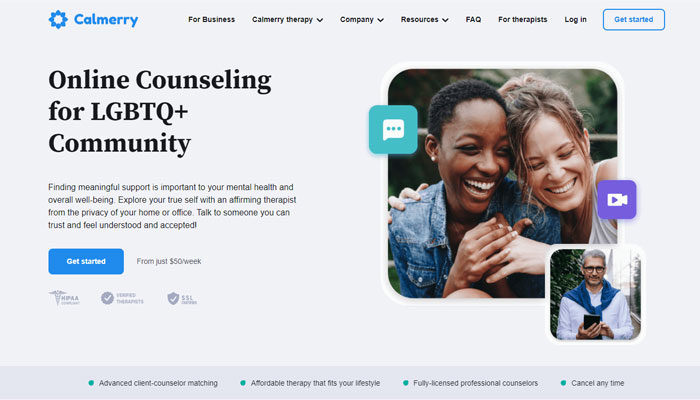Can gender confusion be a phase?

Can gender confusion be a phase? We’re here to answer your questions about gender confusion and dysphoria, symptoms, diagnosis, causes, and coping for you, your child, or your loved one.
If you or someone you love is experiencing gender confusion or gender dysphoria, you might find yourself asking the question “can gender dysphoria be a phase?” and so much of what you see online is based on opinion.
We understand this can be a tricky time to navigate, to say the least, especially if you are suffering from distress and discomfort emotionally and socially.
So, is gender confusion and gender dysphoria a phase? See our answer here.
We’ve put together information based on facts so that you can make the right decisions for yourself or your child moving forward.
✔️ Feeling very confused?
Here at ANZPath, we highly recommend talking to a gender therapist and Calmerry have some of the best available.
It’ll help give you peace of mind.
Get started by filling out this questionnaire.

Can gender confusion be a phase?
Knowing whether or not gender confusion is a phase is a personal conclusion and one not made simply or quickly. It is possible that your child is experiencing gender confusion at a young age and will continue to change as they grow socially and developmentally.
It could also be that you yourself that is experiencing gender confusion.
Either way, we highly recommend reaching out to one of these licensed gender therapists to learn more and discover if treatment is right for you or your loved one with gender dysphoria.
Their experience with many others that are in the same situation as you will give you some clarity on where on the gender scale you might find yourself. So get your big question of “can gender dysphoria be a phase?” cleared up with a therapist.
What Is Gender Confusion and Dysphoria?
Gender confusion is the non-clinical term that refers to an individual who has feelings of not identifying with his or her assigned gender. Gender dysphoria is a diagnosis that usually takes years in the making after working with a licensed gender therapist.
These terms have been used to describe behavioral symptoms in children, adolescents, or adults who either consciously or unconsciously do not identify as male or female.
In other words, if this is something you are experiencing, you would not feel comfortable with the traditional roles expected of your assigned gender and you might feel high anxiety and stress in your daily life.
But, could these feelings be a phase along with gender confusion and gender dysphoria? What are the symptoms of gender dysphoria to help you know for sure?
Symptoms
Everyone is different, and just like the effects of gender dysphoria, the symptoms can differ from person to person. Some individuals battle feelings of internal conflict that affect their self-image or behavior while someone else may alter their gender representation externally.
Children who experience gender dysphoria might show a strong rejection of toys, hairstyles, and clothing that associate with their gender. Symptoms and signs that someone is experiencing gender dysphoria include:
- The insistence that they are different from their birth-assigned gender
- A preference for wearing clothing typically associated with the opposite gender
- A strong desire to be treated and seen as the opposite gender
- Uncomfort with the primary sex characteristics of their birth-assigned gender, especially during and after puberty
- Playing with toys associated with the opposite gender and rejecting gender stereotypical behaviors
- Significant distress that affects functioning in social situations, work, school, and other areas of life
- Anxiety, depression, and social isolation
Gender Dysphoria Diagnosis
As an adolescent or adult, a person must experience significant distress or impairments to be diagnosed with gender dysphoria. Gender confusion in people this age must show suffering in their social life, school, work, activities, and other important areas of life.
A gender therapist will determine how long these feelings have lasted, and move forward after a minimum of six months accompanied by some of the following traits:
- A marked desire to be rid of primary gender characteristics
- Strong desire to have the primary gender characteristics of the opposite gender
- Desire to be treated as the opposite gender
- A desire to be the opposite gender
- A belief that they have the behaviors and reactions that are characterized by the opposite gender
Children are known to experience gender dysphoria and show gender non-conforming behaviors, sometimes as young as age 4. This time is crucial in determining whether or not your child is displaying typical childhood behaviors and true gender dysphoria.
Similarly, with adults and adolescents, children must experience significant levels of distress for a minimum of six months and display some of the following symptoms:
- Insistence they are the opposite gender
- Strong desire to be the opposite gender
- A preference for make-believe as the opposite gender
- Toy preference associated with the opposite gender or strong rejection of toys associated with their gender
- Expressing a dislike for their physical gender characteristics
- Preference for playing with the opposite gender
The symptoms of gender dysphoria usually grow more severe as children get older and as they experience the physical changes associated with their genders during puberty.
While as their parents you may have been suspicious of gender confusion while they were children, asking yourself “is gender confusion a phase?” but as they get older and if during puberty your pre-teen is more insistent, seeking a gender therapist is the first step before self-diagnosing.
Causes of Gender Dysphoria
Several factors may play a role in the cause of gender dysphoria, but the exact causes are blurry. Some studies suggest genetics or hormone influences during prenatal development may be a cause or multiple other complex factors that occur together and are interrelated such as trauma or body dysphoria.
However, we do know that the onset of gender dysphoria can often be during early childhood. While the specifics are unclear, we know that children are assigned a gender based on their physical anatomy and that usually determines how they are raised and interact with others.
In most cases, your child is not consciously aware they are rejecting their own gender or for their reasons, and they usually can’t explain beyond the feeling they have that they “just know”.
As children grow, they may feel strongly about their feelings of mismatched gender identity, and in some cases, this can lead to a diagnosis by a gender therapist of gender dysphoria.
Treatments for Gender Dysphoria
Gender dysphoria treatment is based on each person’s needs and is very individualized. Treatment will focus on helping the individual explore their gender identity and allow a space for safe expression that corresponds with their internal sense of gender. Depending on the person’s age, this could include using different pronouns for medical steps to change their physical body.
Psychotherapy Gender Confusion Treatment
This type of treatment for gender dysphoria will not try to change a person’s individual gender identification, but instead, focus on helping someone feel more comfortable in their identity and gender expression.
The goal of psychotherapy for gender dysphoria is to feel more fulfilled and improve the quality of life by lessening the feelings and negative impact of gender dysphoria.
This can include learning ways to manage stress, practicing self-acceptance, and building a support network. Therapy in itself can help people reduce their anxiety and stress-related symptoms to improve a person’s well-being.
Medical Treatment For Gender Dysphoria
More expensive treatments for gender dysphoria involve cross-sex hormones and gender-affirming medical procedures. This type of treatment could involve body modification to align the internal and external representation of gender.
Hormone therapy and surgery are the two ways to accomplish this treatment but are entirely up to the individual. If you want to achieve a full transition of gender, you will undergo several surgeries and incur significant costs. While this is an option, not everyone makes this choice. Many would rather be treated for gender dysphoria without transitioning.
Hormone therapy can sometimes help to lessen the feelings of gender dysphoria. Masculinizing and feminizing hormones can have side effects, including the potential for manic and psychotic symptoms in some people if they have an underlying psychiatric condition.
Challenges And Risks Of Gender Dysphoria
Children, teens, and adults who are gender non comforting and their families are often at risk of exposure to stigmas and discrimination. People with gender dysphoria also have a higher risk of being victims of violence and bullying.
Research has shown that people who have gender dysphoria have a higher risk of dying by suicide than the general population or have an increased thought of suicide than people who do not experience gender dysphoria.
Feelings of gender dysphoria and confusion contribute to high levels of stress and could lead to other disorders such as depression, anxiety, substance abuse, self-harm, and other serious issues.
These distressing feelings combined with a lack of support could lead to individuals facing difficulties in accessing appropriate healthcare or receiving the medical treatment that they may need.
Coping With Gender Dysphoria – can gender dysphoria be a phase?
Coping with feelings of gender dysphoria involves treatment that will focus on helping you or your loved one feel more comfortable with their gender identity.
Some strategies may be:
- Planning for the future. Do your research and plan your goals, whether that involves making a medical or social transition
- Find support. Join a support group online or in-person to talk with people who have similar experiences. Knowing that you are not alone decreases stress levels significantly.
- Self-care. Practicing prioritizing your self-care is crucial for your emotional wellness. You should be doing things that make you feel good about yourself, your identity, and your body such as hobbies and activities.
- Affirm your identity by doing small things like wearing accessories and hairstyles in your preferred way.
- Continue gender therapy. No matter what step you are in experiencing gender dysphoria, continuing regular therapy will be beneficial in improving your quality of life.
- Spend time exploring your identity and the ways it feels right for you.
